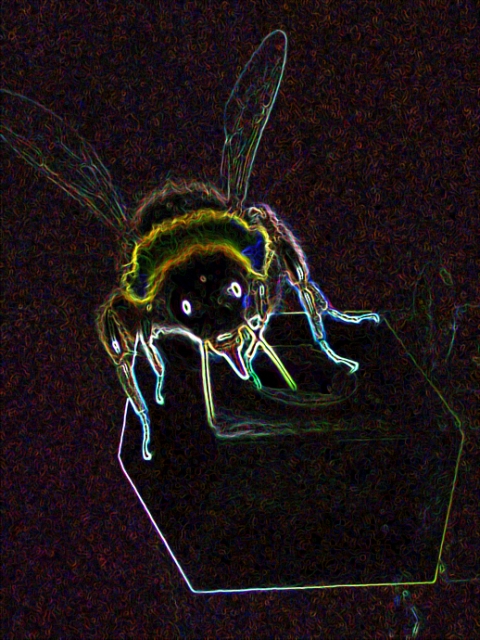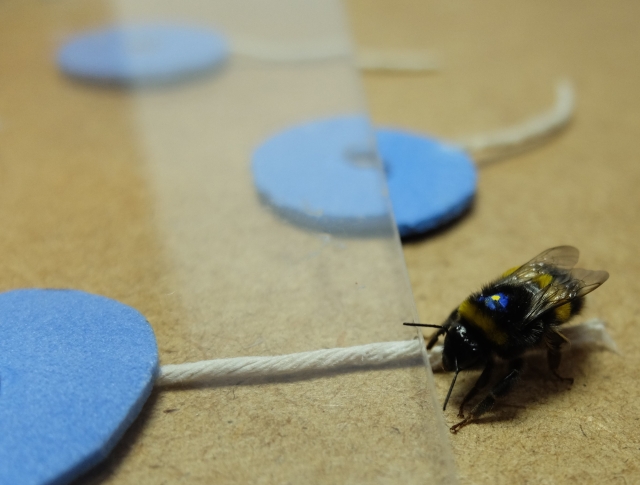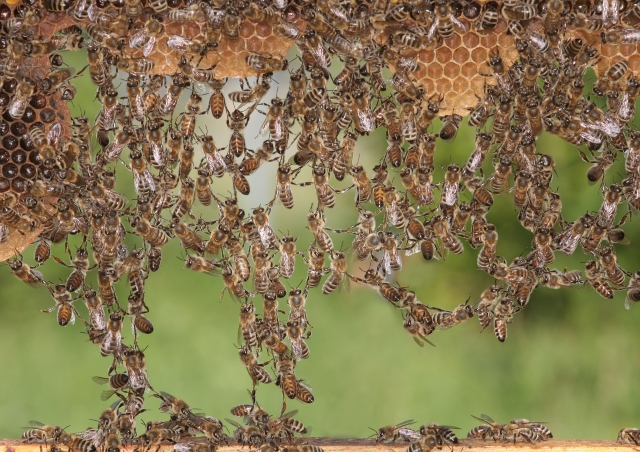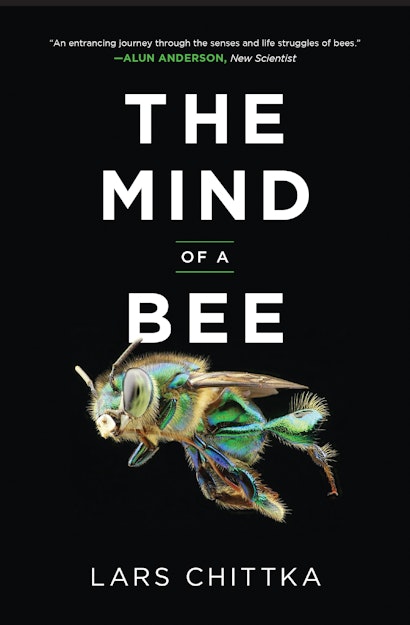You don’t need spaceships or psychoactive drugs for journeys into alien worlds. I invite you to come into the cockpit of an insect, and view the world through its strange senses. You will discover that inside their exquisitely miniaturized brains, there are surprising levels of sentience and intelligence.
***
Most people are now aware that bees are in trouble from exposure to pesticides, diseases and habitat destruction, and that this constitutes a problem since we humans depend on their pollination services of fruits and vegetables. What gets less exposure in the media is that bees are more than the familiar domesticated honey-producers and crop pollinators—that among the more than 25,000 bee species that exist around the globe, we find a huge diversity of lifestyles and some of the most intelligent animals on earth.

The exploration of bees’ sensory worlds has revealed that they reside in an “alternative reality” that is very different from ours, though no less valid. The world that animals perceive is not an objective, veridical representation of the physical world, but is instead filtered through the sensory organs that each animal species has acquired during evolution. Bees have multiple sensory capabilities not present in humans, for example sensitivity to ultraviolet and polarized light, and the earth’s magnetic field. In recent years, the sensitivity of bees to electric fields has been explored, a sensitivity that allows them to assess how recently a flower has been depleted by a competing forager, who would have left their own “electric trace.” Models of a bees’ subjective world allow scientists to predict the view from inside the head of a bee: how they perceive flowers and other objects, using their rich equipment of sense organs.
A key event in the evolution of insect intelligence occurred in a distant wasp-like ancestor of bees, in the Jurassic period. At that stage, bees’ ancestors switched from a vagabond lifestyle to being a so-called central-place forager—an insect that constructed a nest that contained the offspring. This required frequent commuting between this home and foraging sites where the nutrition required for larval provisioning could be found. The selection pressure for spatial memory to be accurate was high: the ancestor of bees that failed to remember their nesting site would have reset their biological fitness to zero. Correspondingly, this change in lifestyle came with a profound change of brain anatomy: the mushroom bodies, insect brain centers with function in multisensory integration and learning, grew disproportionately in size and became convoluted, similar to a mammalian cortex.

Bee brains are unparalleled in the animal kingdom in terms of how much clever computation can be packed into a tiny speck of nervous tissue. The view that bees are cleverly-designed reflex machines, in which intelligent behavior emerges only at the social level, has been entirely overturned in the last decades. We now know that bees have a symbolic language, can count, pay attention, use tools, and can learn by observation. More recent discoveries include emotion-like states in bees, and the existence of distinct “personalities” in which individual bees are defined not just by their genetic background but also by individual autobiographic memories that shape their behavior. Bees even have emotional lives and might have a form of consciousness, though one that is very different from our own.
These findings have wide-ranging implications for the understanding of intelligence in animals more generally. They call into question the notion that large brains are required for intelligent behavior and open future avenues of research exploring the neural hardware mediating intelligence in relatively small nervous systems. Insect brains have several orders of magnitude fewer neurons than vertebrates, meaning that we can give crisp mechanistic explanations for relatively complex behavior.

Neurobiological research on bees, and computer models replicating their brain operations, have shown that relatively advanced levels of intelligence can naturally emerge from exceptionally small nervous circuits. Indeed, it turns out that the single cognitive task that requires a big brain remains yet to be discovered. This raises the question of what big brains are for—and the answer might well be that they do not necessarily mediate higher intelligence—but just more memory storage space (equivalent to a bigger hard drive) rather than more complex or faster computations (equivalent to a better processor). The microcomputer that is the bee brain thus offers potentially extremely efficient and elegant inspirations for bio-inspired information processing in man-made computers.
Recent discoveries about bee intelligence and sentience have important ethical implications for nature conservation: we have a moral obligation to help bees survive—not just because they pollinate our flowers and crops, but because they are sentient beings that live in an exotic alternative reality, in parallel with ours but equally valid.
Lars Chittka is Professor of Sensory and Behavioural Ecology at Queen Mary University of London. He has published over 250 articles on the sensory systems, behavior, cognition and ecology of many species of bees, and their interactions with flowers. Chittka is a recipient of the Royal Society Wolfson Research Merit Award and an elected member of the German National Academy of Sciences (Leopoldina).

